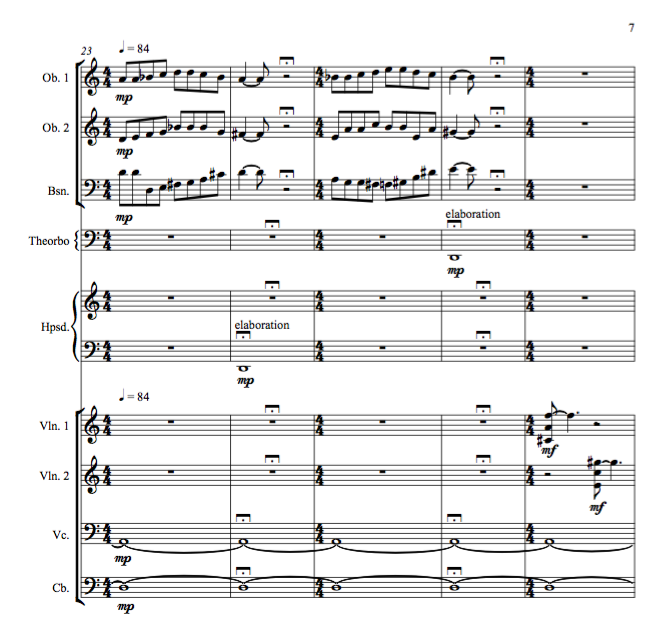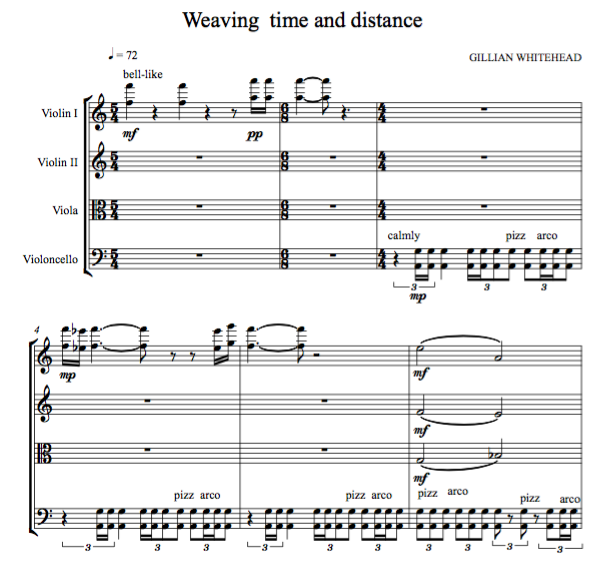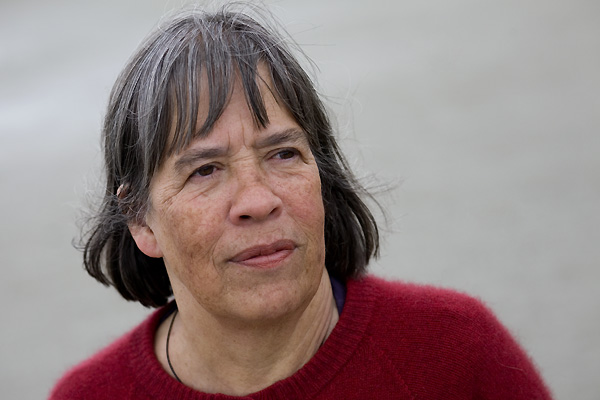Dame Gillian Whitehead will have two new works premiered in coming weeks. 'Time steps out of line', for baroque orchestra, will be played by Juilliard451 in a nationwide tour for Chamber Music New Zealand, 27 February to 13 March. 'Weaving Time and Distance', a string quartet responding to Beethoven's quartets, will be performed at the Auckland Philharmonia Orchestra's ‘Ludwig Reflected#1’ concert on 23 March. We caught up with Dame Gillian to find out more.
Please tell us about 'Time steps out of line', your new piece for baroque orchestra.
The title ‘Time steps out of line’ is a quotation from Claire Beynon’s poem ‘At home in Antarctica’ and refers to the approximately three centuries between my piece and the others on the programme; while writing, I found suggestions of harmony and gesture from earlier times were creeping into the fabric of the piece. ‘Time steps out of line’ is in a single movement but passes through various moods and tempi.
How did you approach writing for an ensemble of period instruments?
The composers of the time (Corelli, Marais, Rameau) were evolving and exploring sonorities to create a repertoire perfectly suited to the ensemble. The orchestra/ensemble of the time consisted of high wind (in this case flutes and oboes, strings who mainly carry the argument, and the continuo who underpin the whole structure). Writing for that ensemble today, with the intervening three centuries of instrumental, orchestral/ensemble and musical language development, is very different. I felt I had to work within the traditional framework of range and dynamic, but relating it to my own language. I largely did away with the idea of continuo, but gave solo roles to bassoon, harpsichord and theorbo, with the two latter given short improvisations. They have carte blanche as to how tonal or atonal some of the improvisations might be.
What practicalities did you have to consider?
The sounds of the Baroque instruments are less forceful than those of modern instruments, so the dynamic range is smaller, and the strings don’t play above fourth position. Balance could be slightly skewed as well.
Was there much feedback from the players?
A little. I gather everything seems to be on track and I haven’t been asked any questions yet since the rehearsals began. I ran the piece in draft form past [Juilliard451 leader] Robert Mealy, who’s been my point of contact to check for problems - there were one or two small details I changed. The percussionist is a conducting student, and he will lead them through the time signature changes.
 'Time steps out of line' bars 23 to 27.
'Time steps out of line' bars 23 to 27.
Please tell us about your piece ‘Weaving Time and Distance’, which will be played at APO’s ‘Ludwig Reflected#1’ together with Beethoven’s Op. 18 no. 3 Quartet.
This was Beethoven’s first quartet, my presumably close-to-last. I looked at the Beethoven, which showed signs of the exploration and innovation and restlessness of his later quartets, but was still firmly rooted in the classical tradition, and its distinct four-movement form. I took some simple ideas from the piece such as the opening A-G seventh that opens the piece as a dominant seventh, a rhythm based on the opening of the second movement expressed in triplets, an ascending scale and the restlessness that drives the piece on. Also, a korimako singing outside my studio gave the pitches for the opening. My formal pattern refers more to late Beethoven form than that of Op 18 no 3.
Your two recent pieces both deal with historical influences - baroque performance practice in ‘Time steps out of line’ and Beethoven’s quartets in ‘Weaving Time and Distance’. How does this subject matter affect your approach to composing?
I’ve also recently been working on a piece for viols. Things come in threes! I adapt my normal style (whatever that is) to the parameters of the ensemble, particularly in the case of the baroque ensemble. I don’t try to push the technical boundaries, but don’t pull the punches as regards musical boundaries. For instance, both pieces employ polyrhythms, which were not much more complex in Beethoven’s time and even simpler during the baroque era.
What do Beethoven’s quartets mean to you?
I love, respect and am in awe of them. Along with the piano sonatas, the greatest of his works, especially the mid to late pieces. His development of the form throughout his life is prodigious, amazing.
’Weaving Time and Distance’ is dedicated to the memory of John Ure, the much loved horn player and long time Director of Operations at the APO. Do you have any anecdotes or memories of John you could share with us?
It’s mainly his presence around the place that stays with me, his energy and enthusiasm, his passion, really, for the orchestra and for music, and New Zealand music.
 'Weaving Time and Distance' bars 1 to 6.
'Weaving Time and Distance' bars 1 to 6.
Photo: Gareth Watkins
SOUNZ blog is designed for expressive discussion and debate amongst the arts and broader community. This is intended to be a safe space so please remember to keep comments respectful and avoid personal attacks, criticisms of specific organisations and defamatory language. Comments are moderated to ensure that they comply with SOUNZ’s Community guidelines.
